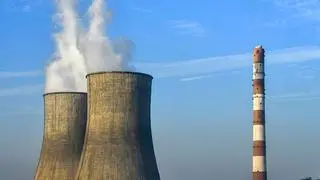Beleaguered rubber growers in the country see no respite in the New Year as prices are likely to remain under pressure due to surplus inventory.
Sector experts are divided in terms of gauging the price outlook for the New Year.
Trade dividedWhile some believe that measures taken by major producing countries such as Thailand, Indonesia and Malaysia to trim output and boost their domestic demand coupled with the increase in demand from tyre makers would arrest the price fall, others indicate that the decline will continue as the demand from end-users would not be enough to revive prices due to global over supply.
However, the prices will be under pressure until the current inventory is cleared and demand outpaces supply significantly. A prediction of a clear trend seems impossible due to the demand-supply imbalance. The International Rubber Study Group has estimated global stocks at 26.74 lakh tonnes at the end of August 2015.
Skidding pricesRubber prices have been on a decline since 2011. During September-October 2014, prices slumped to a five-year-low in Tokyo, Shanghai Indonesia and Thailand. In India also, prices have plummeted to ₹100 a kg after a continuous declining phase of four years. Since then prices picked up slowly to ₹103 as on December 29 on covering purchases at lower levels according to market circles.
Global productionBut before analysing the various reasons for the price fall, a study of the production and consumption in India with other producing countries is essential. The global production of NR comes to around 121.3 lakh tonnes (lt) in 2014, according to available data.
Of this India’s share comes to 7.05 lt or 7 per cent of total global rubber production. Still India retains fifth place in this sector.
With regard to consumption, India stands second after China. During the last few decades, especially during 1980-90, rubber prices in India were 40-50 per cent higher than the international price. After India signed the WTO Agreement, the domestic and international prices became more or less similar. In 2013, the price difference was only 6-10 per cent. But in 2013-14, the difference on an average crossed 21per cent.
During the period from April-August 2014, Indian prices on an average were ruling higher than the international prices from ₹30 to ₹43. In the circumstances, rubber imports were profitable to rubber manufacturers while imports enhanced to 3.6 lt.
A review of 2012-14 period reveals that the consumption exceeded production in India while global production was higher than consumption.
Though there are many reasons for the price fall, important among them are global economic recession fuelled by Euro crisis, sudden drop in economic development of China – a major rubber consumer, the slow recovery of the US, Europe, etc from economic stagnation, the increase in rubber stock of most of the countries in global market etc.
The weakening demand was also attributed to falling prices of crude oil – the key raw material for synthetic rubber, a substitute for natural rubber.
Govt interventionThere are reports that the Prime Minister during his visit to Kerala recently has assured to protect the interests of growers. The Chief Minister of Kerala Oomman Chandy has promised that necessary steps will be taken to maintain the rubber prices at ₹150/kg for RSS 4.
Any further delay in implementing any scheme will result in more loss in plantations. This is the peak production season and buyers naturally expect an increase in arrivals.
But at a time when the rubber price is at the lowest it is unlikely that the growers would release the stocks or resume tapping. A good number of planters have even given up rubber and shifted to some other crops.







Comments
Comments have to be in English, and in full sentences. They cannot be abusive or personal. Please abide by our community guidelines for posting your comments.
We have migrated to a new commenting platform. If you are already a registered user of TheHindu Businessline and logged in, you may continue to engage with our articles. If you do not have an account please register and login to post comments. Users can access their older comments by logging into their accounts on Vuukle.